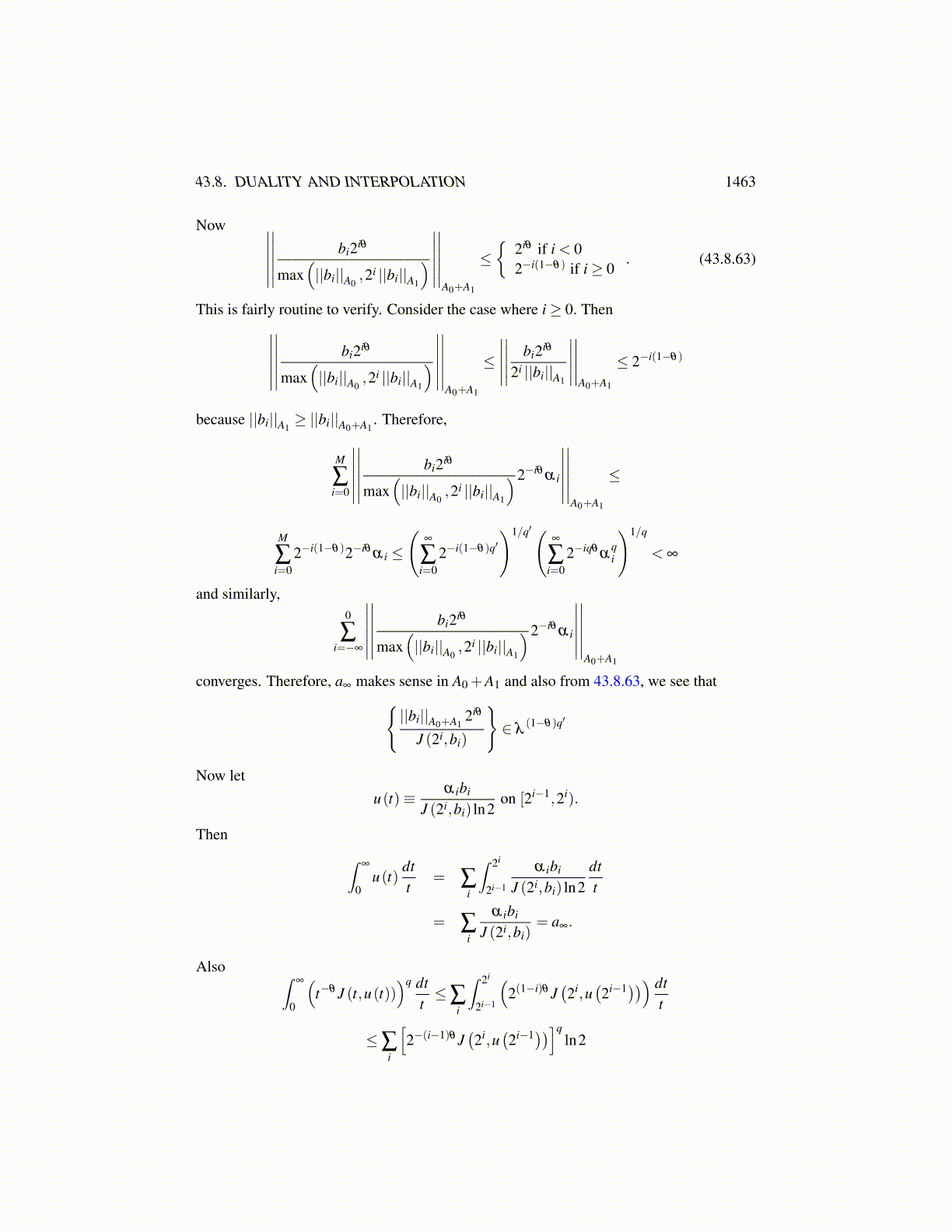
43.8. DUALITY AND INTERPOLATION 1463
Lemma 43.8.3 Let f (t) ≥ 0, and let f (t) = α i for t ∈ [2i,2i+1) where α ∈ λθ ,q. Then
there exists a constant, C, such that∣∣∣∣∣∣t−θ f∣∣∣∣∣∣
Lq(0,∞; dtt )≤C ||α||
λθ ,q . (43.8.59)
Also, if whenever α ∈ λθ ,q, and α i ≥ 0 for all i,
∑i
f(2i)2−i
α i ≤C ||α||λ
θ ,q , (43.8.60)
then ∣∣∣∣∣∣{ f(2i)}∞
i=−∞
∣∣∣∣∣∣λ
1−θ ,q′ ≤C. (43.8.61)
Proof: Consider 43.8.59.∫∞
0
(t−θ f (t)
)q dtt= ∑
i
∫ 2i+1
2it−θq
αqi
dtt
≤∑i
∫ 2i+1
2i
(2−iθ
α i
)q dtt= ln2∑
i
(2−iθ
α i
)q= ln2 ||α||q
λθ ,q .
43.8.61 is next. By 43.8.60, whenever α ∈ λθ ,q,∣∣∣∣∣∑i
(f(2i)2−(1−θ)i
)2−θ i
α i
∣∣∣∣∣≤C∣∣∣∣∣∣{2−θ i |α i|
}∣∣∣∣∣∣lq.
It follows from the Riesz representation theorem that{
f(2i)
2−(1−θ)i}
is in lq′ and∣∣∣∣∣∣{ f(2i)2−(1−θ)i
}∣∣∣∣∣∣lq′
=∣∣∣∣{ f
(2i)}∣∣∣∣
λ1−θ ,q′ ≤C.
This proves the lemma.The dual space of (A0,A1)θ ,q,J is discussed next.
Lemma 43.8.4 Let θ ∈ (0,1) and let q≥ 1. Then,
(A0,A1)′θ ,q,J ⊆
(A′1,A
′0)
1−θ ,q′
and the inclusion map is continuous.
Proof: Let a′ ∈ (A0,A1)′θ ,q,J . Now
A0∩A1 ⊆ (A0,A1)θ ,q,J
and ifa ∈ (A0,A1)θ ,q,J ,